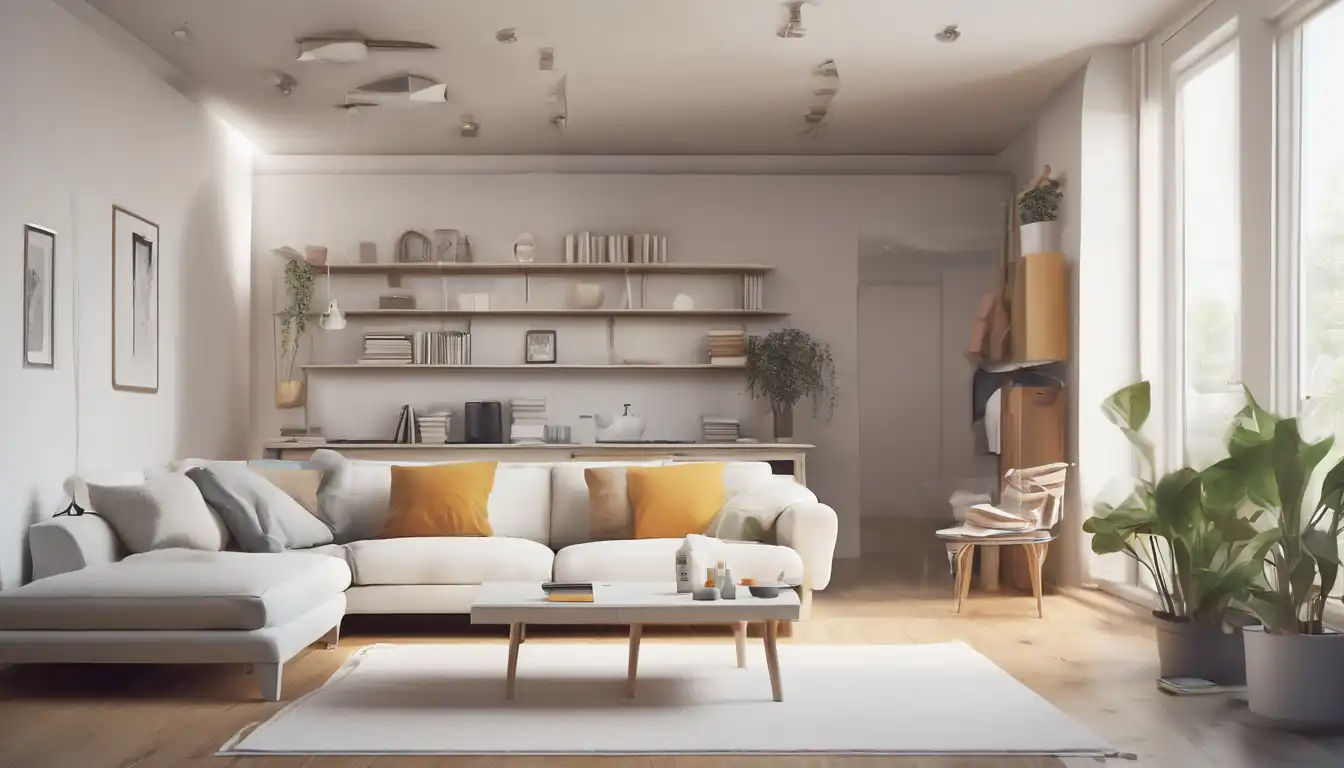Introduction to Minimalist Living
Minimalist living represents more than just an aesthetic choice—it's a transformative lifestyle approach that emphasizes intentionality, purpose, and freedom from material excess. This comprehensive guide explores practical strategies to help you embrace minimalism and create a clutter-free environment that promotes mental clarity and reduces stress. Whether you're just beginning your minimalist journey or looking to refine your approach, these tips will help you cultivate a space that truly serves your needs and values.
The Foundation of Minimalist Philosophy
Understanding the core principles of minimalism is essential before implementing practical changes. Minimalism isn't about deprivation but rather about making conscious choices about what adds value to your life. This philosophy encourages you to question consumerist habits and focus on experiences and relationships rather than material possessions. By adopting this mindset, you'll naturally begin to eliminate clutter and create space for what truly matters.
Benefits of Embracing Minimalism
The advantages of minimalist living extend far beyond a tidy home. Research shows that clutter-free environments can significantly reduce anxiety and improve focus. Financial benefits include reduced spending on unnecessary items and lower maintenance costs. Additionally, minimalism promotes environmental sustainability by reducing consumption and waste. Many practitioners report increased productivity, better sleep quality, and stronger relationships as they shift their focus from things to people and experiences.
Practical Decluttering Strategies
The Room-by-Room Approach
Begin your minimalist journey by tackling one room at a time to avoid overwhelm. Start with smaller spaces like bathrooms or closets before moving to larger areas. For each room, remove everything and only return items that serve a specific purpose or bring genuine joy. This method ensures thorough decluttering rather than superficial organization. Consider our home organization guide for room-specific strategies.
The Four-Box Method
This proven technique involves using four labeled boxes: Keep, Donate, Trash, and Relocate. As you go through your belongings, place each item in the appropriate box. The "Keep" box should contain only essential items, while "Donate" serves items in good condition that you no longer need. "Trash" is for broken or unusable items, and "Relocate" is for things that belong in other rooms. This systematic approach prevents decision paralysis and ensures every item finds its proper place.
Developing Sustainable Minimalist Habits
The One-In-One-Out Rule
Maintain your clutter-free space by implementing the one-in-one-out rule. Whenever you acquire a new item, commit to removing something similar. This practice prevents accumulation and encourages mindful purchasing decisions. For clothing, this might mean donating one shirt for every new one purchased. For kitchen items, replace old utensils when buying new ones. This habit transforms minimalism from a one-time project into an ongoing lifestyle.
Regular Maintenance Sessions
Schedule weekly 15-minute decluttering sessions to prevent clutter from accumulating. Use this time to quickly assess each room and identify items that no longer serve you. Seasonal deep-cleaning sessions provide opportunities for more thorough evaluations. Many find that maintaining a minimalist home becomes easier over time as they develop better consumption habits and organizational systems.
Minimalist Mindset Shifts
Redefining Your Relationship with Possessions
Challenge societal messages that equate possessions with success or happiness. Practice gratitude for what you have rather than focusing on what you lack. When considering new purchases, ask yourself: "Does this add genuine value to my life?" "Do I have something similar that serves the same purpose?" "Where will this item live in my home?" These questions help break impulsive shopping habits and promote intentional consumption.
Digital Minimalism
Extend minimalism beyond physical spaces to your digital life. Organize computer files into clearly labeled folders, unsubscribe from unnecessary email lists, and limit social media usage. Digital clutter can be as overwhelming as physical clutter, affecting productivity and mental well-being. Our digital organization tips provide specific strategies for creating a streamlined digital environment.
Minimalist Home Design Principles
Functional Furniture Choices
Select furniture that serves multiple purposes to maximize space efficiency. Storage ottomans, sofa beds, and nesting tables provide functionality without occupying excessive space. Choose pieces with clean lines and neutral colors that create visual calm. Avoid overcrowding rooms with unnecessary furniture—each piece should have a clear purpose and contribute to the overall flow of the space.
Intentional Decor Elements
When decorating, focus on quality over quantity. Select a few meaningful pieces that bring joy rather than filling surfaces with knickknacks. Incorporate plants to add life without clutter, and use mirrors to create the illusion of space. Remember that empty space is not wasted space—it contributes to the peaceful, uncluttered aesthetic that defines minimalist design.
Overcoming Common Minimalism Challenges
Dealing with Sentimental Items
Sentimental possessions often present the biggest challenge in minimalist journeys. Instead of keeping every memento, select a few meaningful items to display or store properly. Consider photographing items before letting them go, or repurposing elements into functional objects. Remember that memories reside in you, not in objects. If struggling with sentimental clutter, our guide to handling sentimental items offers compassionate strategies.
Managing Family Resistance
When living with non-minimalists, focus on your personal spaces while gently introducing concepts to family members. Lead by example rather than imposing your preferences. Create shared organizational systems that respect everyone's needs, and compromise on common areas. Open communication about the benefits you're experiencing can sometimes inspire others to embrace aspects of minimalism.
Sustaining Your Minimalist Lifestyle
Minimalism is an evolving practice rather than a destination. Regularly reassess your possessions and habits to ensure they align with your current needs and values. Connect with like-minded individuals through minimalist communities or social media groups for support and inspiration. Remember that perfection isn't the goal—progress is. Each small step toward intentional living contributes to greater peace and fulfillment.
By implementing these minimalist living strategies, you'll create not just a clutter-free environment but a lifestyle characterized by purpose, mindfulness, and freedom. The journey may require adjustment and commitment, but the rewards—reduced stress, financial savings, and enhanced well-being—make every effort worthwhile. Start small, be patient with yourself, and celebrate each milestone as you transform your space and your life.
